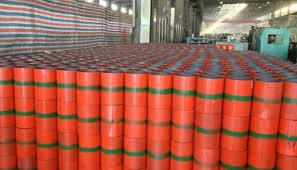- Afrikaans
- Albanian
- Amharic
- Arabic
- Armenian
- Azerbaijani
- Basque
- Belarusian
- Bengali
- Bosnian
- Bulgarian
- Catalan
- Cebuano
- Corsican
- Croatian
- Czech
- Danish
- Dutch
- English
- Esperanto
- Estonian
- Finnish
- French
- Frisian
- Galician
- Georgian
- German
- Greek
- Gujarati
- Haitian Creole
- hausa
- hawaiian
- Hebrew
- Hindi
- Miao
- Hungarian
- Icelandic
- igbo
- Indonesian
- irish
- Italian
- Japanese
- Javanese
- Kannada
- kazakh
- Khmer
- Rwandese
- Korean
- Kurdish
- Kyrgyz
- Lao
- Latin
- Latvian
- Lithuanian
- Luxembourgish
- Macedonian
- Malgashi
- Malay
- Malayalam
- Maltese
- Maori
- Marathi
- Mongolian
- Myanmar
- Nepali
- Norwegian
- Norwegian
- Occitan
- Pashto
- Persian
- Polish
- Portuguese
- Punjabi
- Romanian
- Russian
- Samoan
- Scottish Gaelic
- Serbian
- Sesotho
- Shona
- Sindhi
- Sinhala
- Slovak
- Slovenian
- Somali
- Spanish
- Sundanese
- Swahili
- Swedish
- Tagalog
- Tajik
- Tamil
- Tatar
- Telugu
- Thai
- Turkish
- Turkmen
- Ukrainian
- Urdu
- Uighur
- Uzbek
- Vietnamese
- Welsh
- Bantu
- Yiddish
- Yoruba
- Zulu
High-Quality Stainless Steel Fittings for Reliable Coupling Solutions
Understanding Coupling Stainless Steel Fittings A Comprehensive Overview
In modern industrial applications, the importance of reliable and durable fittings cannot be overstated. Among the various materials available for these components, stainless steel has emerged as a preferred choice due to its unique properties. In particular, coupling stainless steel fittings are essential elements in fluid transfer systems, providing secure connections that can withstand significant pressure and temperature variations.
What are Coupling Stainless Steel Fittings?
Coupling fittings are used to connect two pipes or tubes, allowing for a continuous flow of fluid. Typically, these fittings are characterized by their threaded ends, making them easy to install without the need for welding. Stainless steel, specifically, has a high resistance to corrosion, making it ideal for applications in harsh environments, including chemical processing, food and beverage production, and marine settings.
Types of Stainless Steel Couplings
There are several types of stainless steel couplings available on the market, each designed for specific applications
1. Threaded Couplings These are the most common type, featuring internal threads that allow for easy attachment to male-threaded pipe ends. They provide a secure seal and are used frequently in plumbing and industrial piping.
2. Socket Weld Couplings Used primarily for high-pressure applications, socket weld couplings allow pipes to be inserted into a socket and welded in place. This produces a strong joint that is resistant to the demands of high temperature and pressure.
3. Compression Couplings These fittings use a ferrule and nut to create a tight seal around the pipe. They are particularly useful in applications where pipes may need to be disconnected and reconnected frequently.
coupling stainless steel fitting

4. DIN Couplings These comply with the German Industrial Standard (DIN) and are commonly used in European applications. They offer excellent durability and are available in various sizes and configurations.
Advantages of Stainless Steel Couplings
Stainless steel coupling fittings come with numerous advantages
- Corrosion Resistance One of the most significant benefits of using stainless steel is its resistance to corrosion caused by moisture and chemicals. This property extends the life of the fitting and reduces maintenance costs.
- Strength and Durability Stainless steel is known for its robust nature. Couplings made from this material can handle high pressure and temperature ranges, making them suitable for industrial applications.
- Versatility These fittings can be used in various industries, including oil and gas, pharmaceuticals, water treatment, and food processing. Their ability to maintain integrity in hostile conditions makes them highly versatile.
- Aesthetic Appeal Stainless steel fittings are not only functional but also visually appealing. Their shiny finish and sleek design can improve the overall look of the installation while maintaining cleanliness, particularly important in food-related applications.
Conclusion
Coupling stainless steel fittings play a vital role in ensuring efficient fluid transport in numerous industries. Their corrosion resistance, strength, and adaptability make them superior choices for a multitude of applications. When selecting fittings for any project, it's crucial to consider the specific requirements of the environment and the properties of the materials involved. With the right stainless steel couplings, industries can assure reliable performance and longevity in their piping systems. Whether it's in the construction of a new facility or the maintenance of existing systems, investing in high-quality stainless steel fittings is a decision that pays dividends in safety and efficiency.
-
Tubing Pup Joints: Essential Components for Oil and Gas OperationsNewsJul.10,2025
-
Pup Joints: Essential Components for Reliable Drilling OperationsNewsJul.10,2025
-
Pipe Couplings: Connecting Your World EfficientlyNewsJul.10,2025
-
Mastering Oilfield Operations with Quality Tubing and CasingNewsJul.10,2025
-
High-Quality Casing Couplings for Every NeedNewsJul.10,2025
-
Boost Your Drilling Efficiency with Premium Crossover Tools & Seating NipplesNewsJul.10,2025







